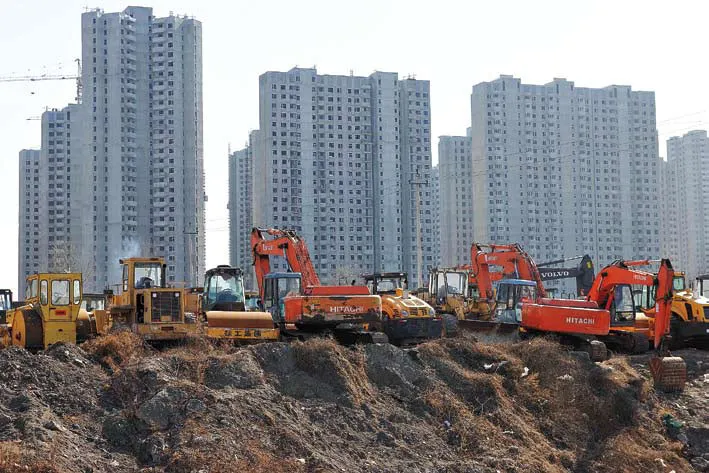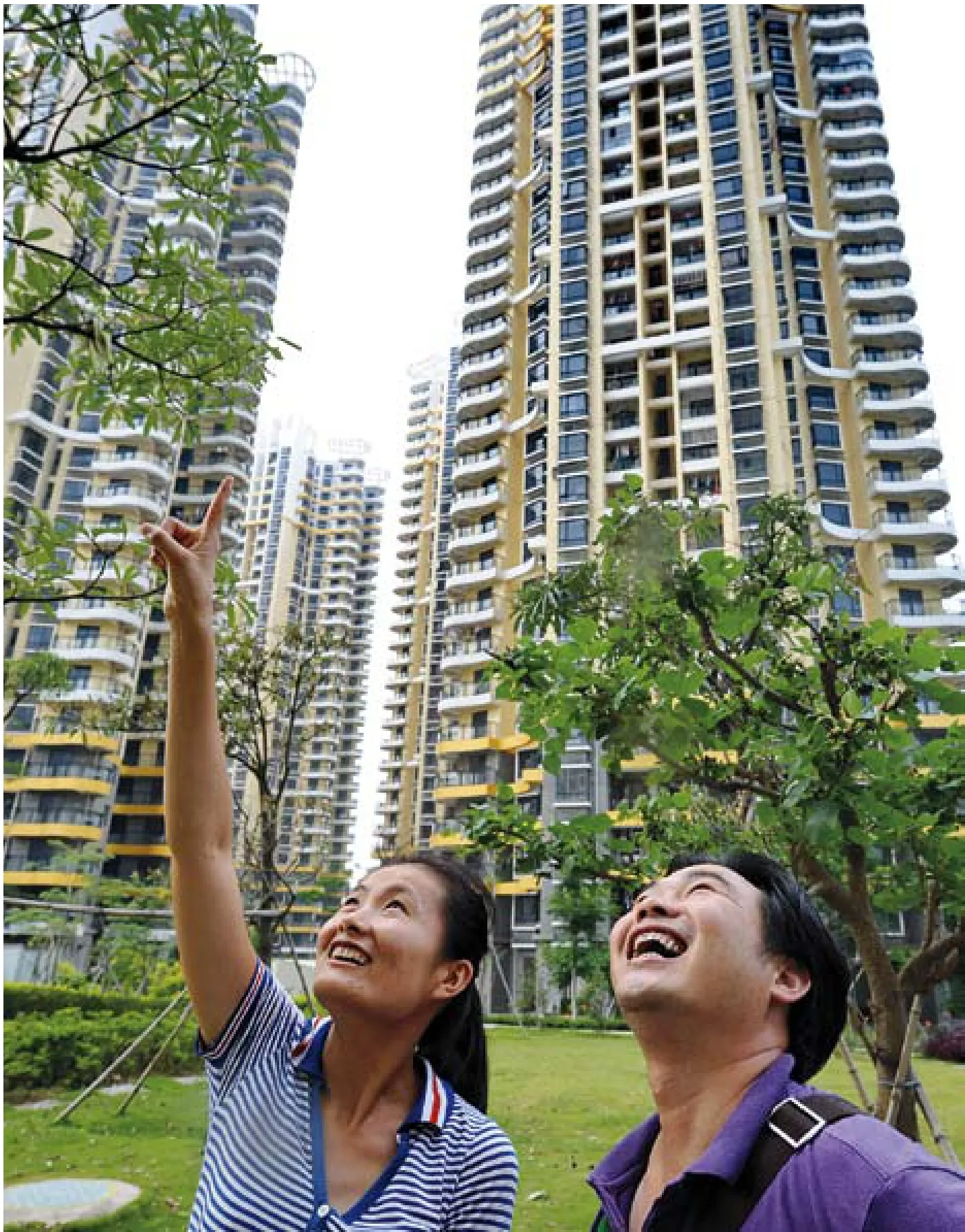Tightening Home Purchase Limits
2011-10-14ByWANGJUN
By WANG JUN
Tightening Home Purchase Limits
By WANG JUN
More Chinese cities will limit home purchase to cool the red-hot real estate market

ZhAN YAN
In June 2011, the average house price in 100 Chinese cities was 8,856 yuan ($1,373) per square meter. Of these cities, house prices in 75 of them increased from the previous month. Zhengzhou and Luoyang in Henan Province, Changchun in Jilin Province, and Weifang in Shandong Province had the biggest month-on-month price hikes.
In the first half of 2011, Chongqing Municipality, and Fuzhou and Xiamen in Fujian Province saw the biggest increase in house prices over the same period last year, which stood at 30.1 percent, 33.69 percent and 25.07 percent respectively.
These figures from the China Index Academy, one of China’s largest property research organizations, may explain the decision made by the State Council meeting chaired by Premier Wen Jiabao on July 12.
The decision required cities that had already implemented home purchase limits continue to carry out related policies, while second- and third-tier cities whose house prices increased rapidly carry out necessary policies to limit home purchases.
According to a Xinhua News Agency report, the meeting pointed out one of the major problems in the real estate market is some cities still face great pressure of real estate price hikes and some cities have relaxed control of the real estate market.
Any indications of house price rebounds will certainly be stopped by the government. Possible house price rebounds in secondand third-tier cities, market rumors that home purchase limits will soon end and attempts to relax control of the real estate market by some cities caused this round of actions by the Central Government.
Imperative action needed
In April 2010, Beijing announced regulations allowing each family to buy only one extra home. This was the first policy limiting property purchases. Following Beijing, similar policies sprang up in Shanghai, and Guangzhou and Shenzhen of Guangdong Province, as well as nearly 40 other cities.
Under strict control, house prices in some cities have decreased on a yearly or monthly basis—but in some second- and third-tier cities, house prices are still soaring.
Figures released by the National Bureau of Statistics (NBS) show, from January to June this year, among the 70 large and medium-sized cities, the number of cities whose house prices rose above 5 percent year on year was 44, 45, 42, 38, 31 and 28, respectively, all in second- and third-tier cities. Compared with first-tier cities, second and third-tier city increases were much more threatening.
For example, in January this year, house prices in Yueyang of Hunan Province rose 22 percent year on year, the biggest of the 70 cities. In April, Dandong of Liaoning Province ranked first with a year-on-year increase of 11.3 percent. In May, house prices in Dandong, Urumqi of Xinjiang Uygur Autonomous Region and Qinhuangdao of Hebei Province all increased more than 8 percent.
Out of these 70 large and medium-sized cities, house prices have even soared six or 10-fold in the past fve years.
Figures of prices of newly built commercial houses released by Centaline Property Agency Ltd. show, in the frst half of this year, house prices in cities that implemented home purchase limits rose by an average of 4.04 percent year on year, while in cities without the limit, the fgure was 4.89 percent.
As house prices increase, the sales volume of the real estate market is also growing rapidly. According to the NBS fgures, in the first half of 2011, among the country’s 70 large and medium-sized cities, 440 million square meters of commercial houses were sold, up 12.9 percent year on year
Chen Sheng, Deputy Director of China Index Academy, said one of the reasons for the rapid increase of house prices in secondand third-tier cities is that after frst-tier cities began to place limits on home purchases, speculators moved their operations to secondand third-tier cities.
“If the government allows house prices in second- and third-tier cities to rise violently and then transmit to other regions, it would have a negative impact on the overall control of the real estate market,” Chen said.
Besides the purchase limits, the Central Government is also strengthening efforts to build housing projects for low-income residents to balance the supply and demand of the real estate market and curb house prices.
The State Council meeting on July 12 said by the end of June, 5 million flats for low-income residents were under construction, more than 50 percent this year’s goal. Of this total, 4 million apartments are expected to be completed by the end of 2011. The meeting also said that construction on all 10 million apartments for low-income residents must start before the end of November.
Questionable results

ZhANG GUOJUN
“Now it is unclear how the policy of these limits will be implemented in secondand third-tier cities,” said Zhu Zhongyi, Vice Chairman of China Real Estate Association.“But I think the Ministry of Housing and Urban-Rural Development and related ministries will discuss detailed measures with the local governments where house prices have increased rapidly. And in the future, different cities may adopt different measures of home purchase limits.”
Real estate developers of different sizes may face different fates from the policy.
Fan Xiaochong, Vice President of Sunshine 100 Real Estate Group, one of the country’s largest real estate developers, said once the policy is extended to second- and third-tier cities, small and medium-sized real estate companies will fnd “houses are unsalable or even on the houses that are sold, the mortgage loans cannot be approved by the banks.”
Fan said small and medium-sized real estate companies may not close down in the short term, but they will be the target of mergers and acquisitions by large-scale developers.
Mao Daqing, General Manager of the Beijing Branch of China Vanke Co. Ltd., another large-scale real estate developer, said if the policy is extended to some secondand third-tier cities where there are Vanke projects, the group won’t consider lowering prices. “We will fx the prices in accordance with market conditions,” Mao said.
That refects a difference between largescale estate developers and small-scale ones: Large developers can withstand the home purchase limit policy with their land reserves and large housing projects, but smaller companies will be helpless due to their lack of land and capital.
Ye Tan, a fnancial commentator, said at present there is an opinion the real estate market has reached a turning point and controls will be relaxed. But the State Council meeting said the real estate market still faces pressure from price hikes. Relaxing measures now will only result in rebounding house prices. So for the time being, Ye said, the control will continue.
She said there are many ways of controlling the real estate market, of which the home purchase limit is an important one. The policy has been largely successful, especially in cities like Beijing. But after frsttier cities started to limit home purchase, house prices in the nearby second- and third-tier cities have increased, and in cities along high-speed railways, house prices are also rising.
“What I will emphasize is that home purchase limit should be a temporary measure, not a long-term one, because this is an administrative measure and can have serious side effects,” Ye said.
